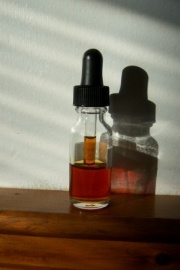Difference between revisions of "Amber varnish"
Jump to navigation
Jump to search
m (Text replace - "== Authority ==" to "== Sources Checked for Data in Record ==") |
|||
| Line 9: | Line 9: | ||
[[File:27-40_Amber.Varnish_glass.jpg|thumb|Amber Varnish]] | [[File:27-40_Amber.Varnish_glass.jpg|thumb|Amber Varnish]] | ||
| − | == | + | ==Resources and Citations== |
| − | |||
| − | |||
| − | |||
| − | |||
* Hermann Kuhn, ''Conservation and Restoration of Works of Art and Antiquities'', Butterworths, London, 1986 | * Hermann Kuhn, ''Conservation and Restoration of Works of Art and Antiquities'', Butterworths, London, 1986 | ||
Latest revision as of 11:34, 26 April 2022
Description
A varnish that has Amber as one component. Amber is insoluble in most resin solvents and must first be melted then mixed with oil to form an oil/amber varnish. Amber is a very hard resin; it softens at about 250C (482F) and melts between 290-300C (554-572F). Heating, however, changes the color of amber from a yellow to brown.
Synonyms and Related Terms
barniz de ámbar (Esp.); vernice d'ambra (It)
Resources and Citations
- Hermann Kuhn, Conservation and Restoration of Works of Art and Antiquities, Butterworths, London, 1986
- Dictionary of Building Preservation, Ward Bucher, ed., John Wiley & Sons, Inc., New York City, 1996
- Kurt Wehlte, The Materials and Techniques of Painting, Van Nostrand Reinhold Co., New York, 1975

